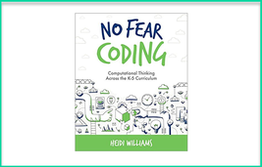
Fortunately, this is where books like No Fear Coding by Heidi Williams can be incredibly helpful and informative.
As Williams argues, “Coding provides a vehicle for students to create content, rather than just consume it” thereby becoming the perfect activity to move a classroom towards a more student-centered environment.
Chapter 1 of No Fear Coding opens with an overview of why K-5 educators should teach coding in their classroom. Williams argues that coding can help with: 1) Making thinking visible; 2) Sustaining creativity; 3) Encouraging computational thinking; 4) Fostering future-ready skills; and 5) Empowering students to take action.
While I absolutely agree with these 5 items, I think the most powerful section of this chapter is her discussion on “Why Not Teaching Coding.” In this section, Williams addresses common challenges and roadblocks that teachers face when attempting to bring coding into the classroom. Williams goes on to address each of these roadblocks with some concrete suggestions for how to get past them.
Chapter 2 covers the discussion of terms and for this book, Williams equates “coding” with “computational thinking.” She argues that, “since computational thinking is all about the thought processes needed to think like a computer, the use of coding allows students to think computationally and receive immediate feedback on their thinking. Thus, coding can be seen as computational thinking without human error.”
Williams goes on to further address these definitions and draw comparisons between project-based learning, computational thinking, and inquiry-based learning:
In Chapter 3, Williams begins to make curricular connections by addressing how and where coding can specifically fit into the curriculum. She ties in the ISTE and CSTA computational thinking standards and also shows how they connect with the CCSS, which I find to be incredibly beneficial.
Williams builds on this by looking at computational thinking concepts across all core subject areas, which for me, is one of the highlights of this chapter:
Chapter 4 takes a look at pedagogy and addresses “What teaching coding looks like.” Williams pulls in multiple case studies to provide real-world examples of how teachers have been successful with teaching computational thinking. This chapter also ends Part 1 of the book, which provides an excellent overview to the basics of computational thinking, why these skills are beneficial for students, and how to start thinking about integrating computational thinking into the curriculum.
Part 2 of the book is broken down into three chapters, all at which look at using Bee-Bots in the classroom. On a personal note, I regularly use Bee-Bots when introducing computational thinking to the preservice teachers I work with, and I have found them to be highly beneficial tools.
These three chapters take a look at the Why and How of using Bee-Bots in the classroom and then go on to look at three short case studies where schools have implemented Bee-Bots. For teachers or schools looking for a simple and fun way to begin integrating computational thinking and coding skills into the curriculum, these three chapters provide some excellent ideas.
Part 3 of the book mirrors Part 2 except it looks at using Code.org. Williams discusses the Why and How of using Code.org and then goes on to share four case studies that look at the implementation of Code.org across a variety of settings.
Similar to Part 2, I think this section is an excellent resource for teachers and schools looking for practical, easy to implement strategies for getting computational thinking into the classroom.
Part 4 follows on a similar note, this time looking at how Scratch be implemented. Like before, Williams covers the Why and the How of using Scratch before moving on to providing multiple project ideas. This section is the most robust, with Williams offering integration ideas across all core subject areas with a variety of activities and sample lessons.
This section primarily looks at Augmented Reality (AR) through a platform called ARIS (Augmented Reality for Interactive Storytelling). It provides some great ideas for how students can move beyond the activities and ideas discussed in the previous sections towards the types of technologies that are just now becoming more commonly used.
Overall, I think No Fear Coding is an excellent resource for teachers and schools looking to begin integrating computational thinking into the K-5 curriculum. Even for schools that have already begun this journey, Williams provides a wide variety of ideas, strategies, and tools that can be used. I absolutely agree with Williams that Bee-Bots, Code.org, and Scratch are three perfect places to begin, and I’m glad to see the emphasis on these three resources within the book.
I was also happy to see a discussion surrounding the Why of coding. I think a lot of teachers may be hesitant to implement activities like this in their classroom, and these sections provide excellent insight into the benefits that computational thinking and coding can provide for today’s K-5 students.
In short, if you’re interested in supporting K-5 computational thinking, No Fear Coding is an excellent resource with a wide variety of strategies and activities that is also an incredibly approachable read, even for teachers who have no background in coding or computer science.

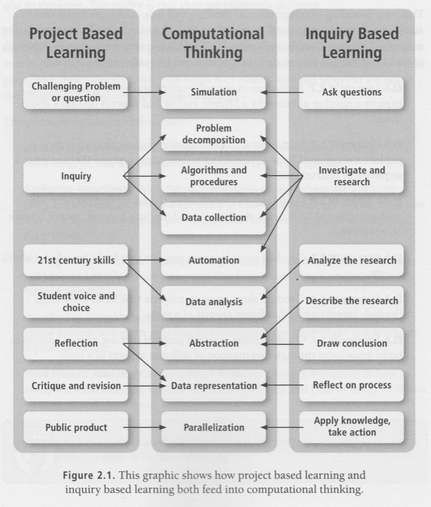
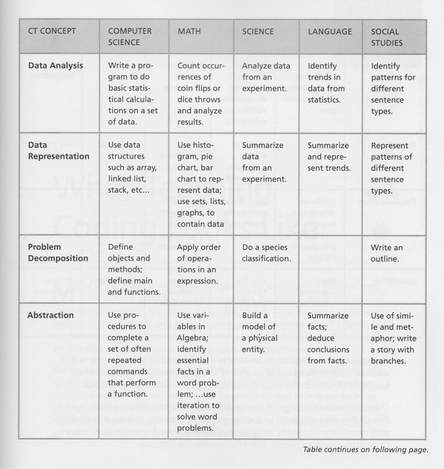
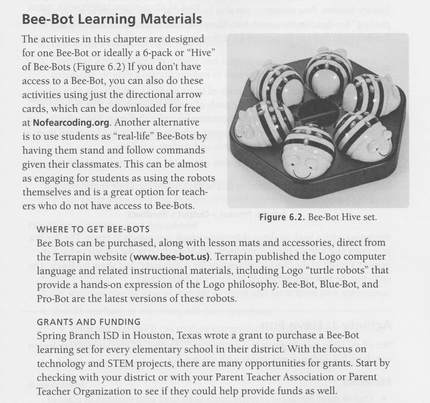
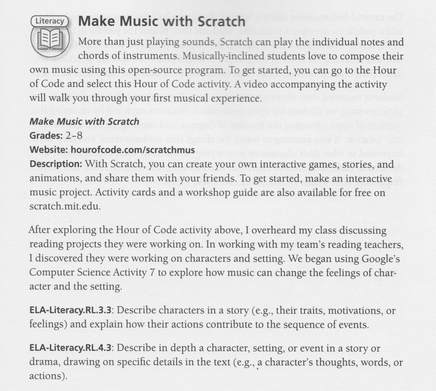
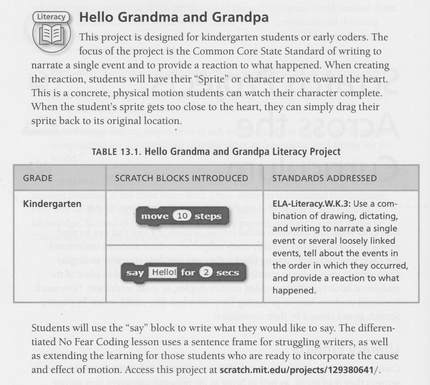


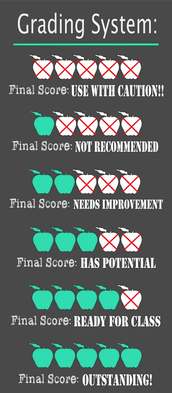





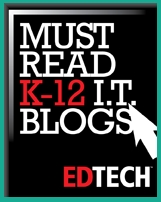
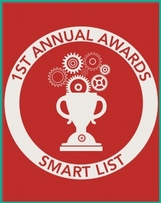
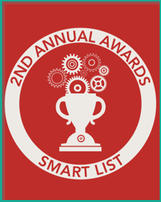


 RSS Feed
RSS Feed
